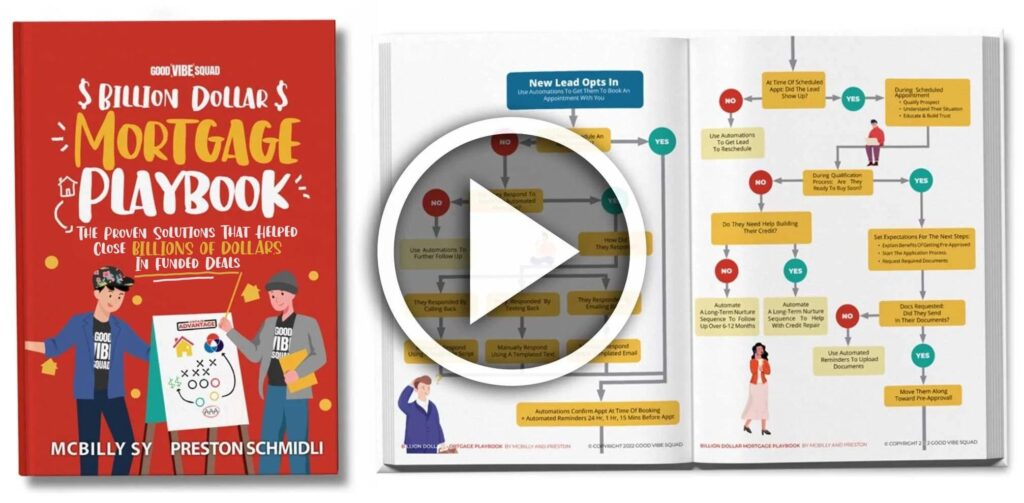Get Our Billion Dollar Mortgage Playbook
Get the proven strategies that helped close Billions of dollars in funded deals!
In any industry, speaking the lingo and understanding technical terms is necessary for communicating with clients, colleagues, and supervisors. But at the intersection of the mortgage and financial industries, there can be a lot to learn, and it can be overwhelming. This article sets the record straight on some of the most common terms used in mortgage and loan processes by loan officers and loan originators starting with loan origination points.
Key Takeaways
- Learning industry lingo is a process.
- Some terms like “loan origination points” may be referred to by multiple names such as “basis points,” which can make things confusing.
- There are plenty of resources to stay on top of trends and terminology in the mortgage industry.
Defining Loan Origination Points
In the mortgage industry, “points” refer to a fee that is calculated as a percentage of the total loan amount. You may hear several names for these including “loan origination points” and “basis points,” but they are all calculated the same. Each basis point is 1/100th of one percent, so 33 basis points (also commonly abbreviated as bps) would equate to roughly 1/3 of one percent which comes out to $333 of a $100,000 mortgage.
Loan origination points or basis points are important because this is how some loan officers are paid rather than earning a commission by percentage or flat-rate base pay.
Other Important Loan Officer Terminology
Basis points are just one of the most common terms used in mortgage and loan processes. The following list includes other terminology that most loan officers and loan originators use on a daily basis. Although the list is not exhaustive, it is a great starting point for understanding the language used in the industry. The list is in alphabetical order, courtesy of MoneyGeek.
Acceleration Clause
A borrower that misses too many payments and defaults on their mortgage is likely to trigger an acceleration clause. This means they have breached their contract in some way and will be expected to make accelerated loan payments which may include immediate repayment of the full outstanding balance on their mortgage.
Alt-A Paper
This is slang for “Alternative-A paper,” which is a loan category typically assigned to borrowers of a particular risk factor. Some bigger companies may not work with borrowers of this classification.
A-Paper
This is another term that may be referred to multiple ways. “A-Paper” and “Prime” borrowers typically have good-great credit, a savings, and good payment history. They are considered less risk than “Alt-A Paper” and “Subprime” borrowers.
Back-End Fee
This is the payment that lenders make to brokers. It’s important to remember that more on the front end typically means less on the back end, which is also something Preston discusses on our live weekly coaching calls to help LOs maximize their earning potential.
Base Rate
A base rate salary might bring about a sense of control and stability, but this might not be in every LO’s best interest if they’re looking to increase their earning potential (see previous term).
CFPB
CFPB stands for the Consumer Financial Protection Bureau which was created by Congress to increase transparency and fairness in the financial space.
Direct Lender
Direct lenders are able to handle loans all the way from application processing to underwriting and funding.
Documentation
As a loan originator, the application process requires taking and verifying income and identity (among other factors) through documentation.
Interest
Fees charged by lenders for borrowed money are called interest. Interest payments are typically made monthly and combined with the mortgage payment.
Loan Broker
This is simply another term for mortgage broker.
Loan Officer
Often used interchangeably with loan originator and abbreviated as LO, loan officers can work in a variety of environments including remotely to help borrowers achieve their goal of home ownership.
Loan Originator
Loan Originators are also commonly referred to as LOs and although some people use the term interchangeably with loan officer, this isn’t always the case. Read more about the differences in experience and earning potential.
Pre-Approval
If a borrower is deemed as creditworthy and able to obtain financing, a pre-approval may be issued based on information that the lender has verified.
Issuing a pre-approval does not guarantee that a loan will actually be closed and funded, but issuing more pre-approvals generally increases the odds of closing and funding more loans.
Pre-Qualification
Like a pre-approval, a borrower is considered able to obtain financing; however, their financial information has not been verified yet and will need to be in order to move the process forward.
Processing
A loan is said to be in processing in between the application and funding stages.
How to Access Free Training and Resources
If you’re looking to sharpen your sales and marketing skills or better understand industry trends, Good Vibe Squad’s training and resources are here to help. You can learn everything from crafting your own Unique Selling Proposition (USP) to the best social media strategies for loan officers in this market. Whether you’re new to the industry or you’re a seasoned pro, there’s something for everyone.
With these free tools, you’ll have a solid grasp of industry terms and trends in no time.
Join a Community of Mortgage Industry A-Players
Good Vibe Squad offers award-winning lead gen and marketing services for mortgage professionals looking to grow their potential within the industry. As a member, you gain access to premiere coaching sessions and a community of like-minded loan officers who celebrate each other’s successes.
Schedule a call with our team today!







